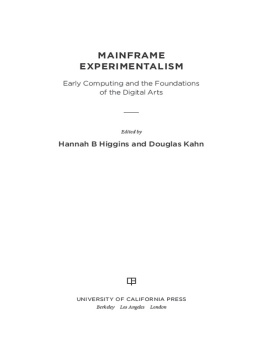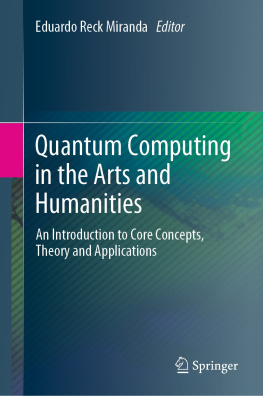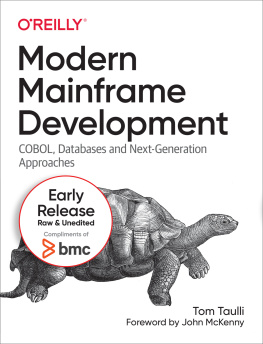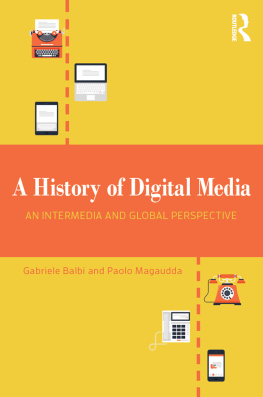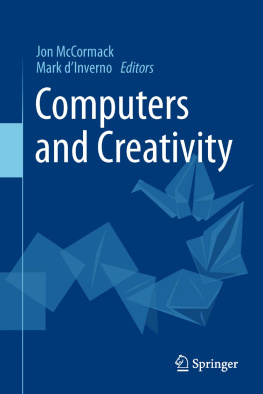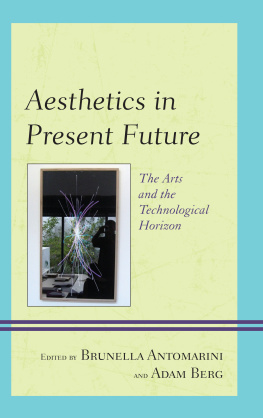University of California Press, one of the most distinguished university presses in the United States, enriches lives around the world by advancing scholarship in the humanities, social sciences, and natural sciences. Its activities are supported by the UC Press Foundation and by philanthropic contributions from individuals and institutions. For more information, visit www.ucpress.edu.
University of California Press, Ltd.
London, England
In keeping with a commitment to support environmentally responsible and sustainable printing practices, UC Press has printed this book on 50-pound Enterprise, a 30% post-consumer-waste, recycled, deinked fiber that is processed chlorine-free. It is acid-free and meets all ANSI/NISO (z 39.48) requirements.
ACKNOWLEDGMENTS
This book is dedicated to James Tenney, whom we would like to thank posthumously for his role in a 2002 symposium we held at the University of California, Davis. The topic of the symposium was the computer programming workshop he had held in 1967 in the living room of Dick Higgins and Alison Knowles, publishers of Something Else Press in New York City and parents of Hannah Higgins, coeditor of this book. Knowles was the other main speaker at the symposium, for her The House of Dust was generated in the context of the workshop and with Tenney's ongoing assistance. Like several artists whose work with early computers is at the core of this book, we were the beneficiaries of Tenney's generosity and expertise. This book would be, literally, unimaginable without him.
Several editors from the University of California Press attended our symposium. Among them were Stephanie Fay and Deborah Kirshman, who expressed an immediate interest in the project. At the time, we imagined a very modest publication, but we soon came across a wealth of unexplored topics, source materials, and a new generation of scholars. We sought out authors and artists internationally, suffered several setbacks, and pulled back when the project exploded in size. This critical process required the gift of patience from our writers and artists and the Press. By 2008, it looked as if we were ready to go, but the copyright clearances have been complex, involving estates and long-since defunct publications. We are especially grateful for the generous granting of rights by the artists, writers, and estates involved. Finally, the astute guidance of Mary Francis and Eric Schmidt in helping to complete the publication stage should not go unacknowledged. Thank you.
Over the ensuing decade, our assistants worked tirelessly to pull this anthology together from Davis, Sydney, Washington, DC, and Chicago. Special thanks go to them for managing a complex project with grace. Douglas Kahn's assistant, Nilendra Gurusinghe, at the University of California, helped with the early stages of the project; Nathan Thomas, Higgins's research assistant at the University of Illinois, Chicago, donned a detective hat and had a keen eye for detail in managing the text and rights issues and formatting as the book was prepared for publication; and Peter Blamey in Sydney saw the project through its final stages. Generous grants from the National Institute for Experimental Arts, College of Fine Arts, University of New South Wales, and the University Scholar program at the University of Illinois, Chicago made the indexing and the completion of the book possible.
Finally, we would like to thank our children and spouses for their continued patience, support, and daily inspiration.

INTRODUCTION
Hannah B Higgins and Douglas Kahn
What we need is a computer thatturns usnot on but into artists.
JOHN CAGE, 1966
Mainframe Experimentalism is a collection of essays and documents on the encounter with mainframe and minicomputers by artists, musicians, poets and writers, and filmmakers in and around the 1960s. The time frame for our book begins with the era of room-size mainframe computers in the late 1950s, extends through the 1960s' refrigerator-size, transistor-operated minicomputers and institutionally bound digital technologies, and ends in the 1970s with the transition to microcomputers, the desktop computers that paved the road for today's ubiquitous digital devices. This duration, the long 1960s, was a time when simple access to computers was determined by institutional rather than consumer logics. These institutions inhered to geopolitical, military, corporate, and scientific priorities that were not immediately or obviously amenable to the arts. For those artists lucky enough to find access to these computers, technical requirements mandated the expertise of engineers, so the process was always collaborative, yet rarely sustainable over any great length of time. Thus, while mainframes and minis grew at the core of major institutions, they played contingent and fleeting roles in artistic careers. It is a testament to all involved that so much was attempted and achieved within these constraints.
With Mainframe Experimentalism, we are attempting to bring a new focus on a range of these artistic activities. The vitality and achievement across the arts of the 1960s are highly prized by today's critics, curators, historians, and collectors; a quick perusal of garden-variety museums of contemporary art demonstrates as much, since the decade that brought us pop, conceptualism, Fluxus, Happenings, video art, and minimalism is seen as the foundation for the arts of the present. The same can be said of 1960s literature, music, and film. In contrast, the mainframe- and mini-based ancestors of today's digital art are generally remembered with some embarrassment. Whether because of a lack of exposure to actual computers, the absence of a critical apparatus that understood what was at stake in computer-based artwork, or the overabundance of geeky stereotypes, public perception of early computing and the arts did not fare well, as is recounted in tragic detail in Grant Taylor's contribution to this volume. If anything, first-generation computer art was and has been synonymous with bad art or, more generously, an immature or technologically defined aspirant art. It was associated with engineers with artistic aspirations or artists with engineering aspirations, rather than being seen as a technology that had fused with artistic practice and achievement, such as the chemistry of oil paints or the mechanics of a piano.
The artist Jim Pomeroy spoke for many when he lamented the look of computer artflashy geometric logos tunneling through twirling wire-frames, graphic nudes, adolescent sci-fi fantasies, and endless variations on the Mona Lisa. When it was not demonstrating new graphical interface capabilities or plotting information, computer art often meant emulations of the art historical canon, especially modern genres that already trafficked in simplified graphics. There appeared to be some artistic rationale, especially in the 1960s, in the way the computer provided a means to distance the maker from artistic authorship and thus from the perceived excesses of expressionism, yet this distancing could also operate in too close a proximity to the technocratic drive and bureaucratic numbing of both capitalism and the Eastern Bloc.

